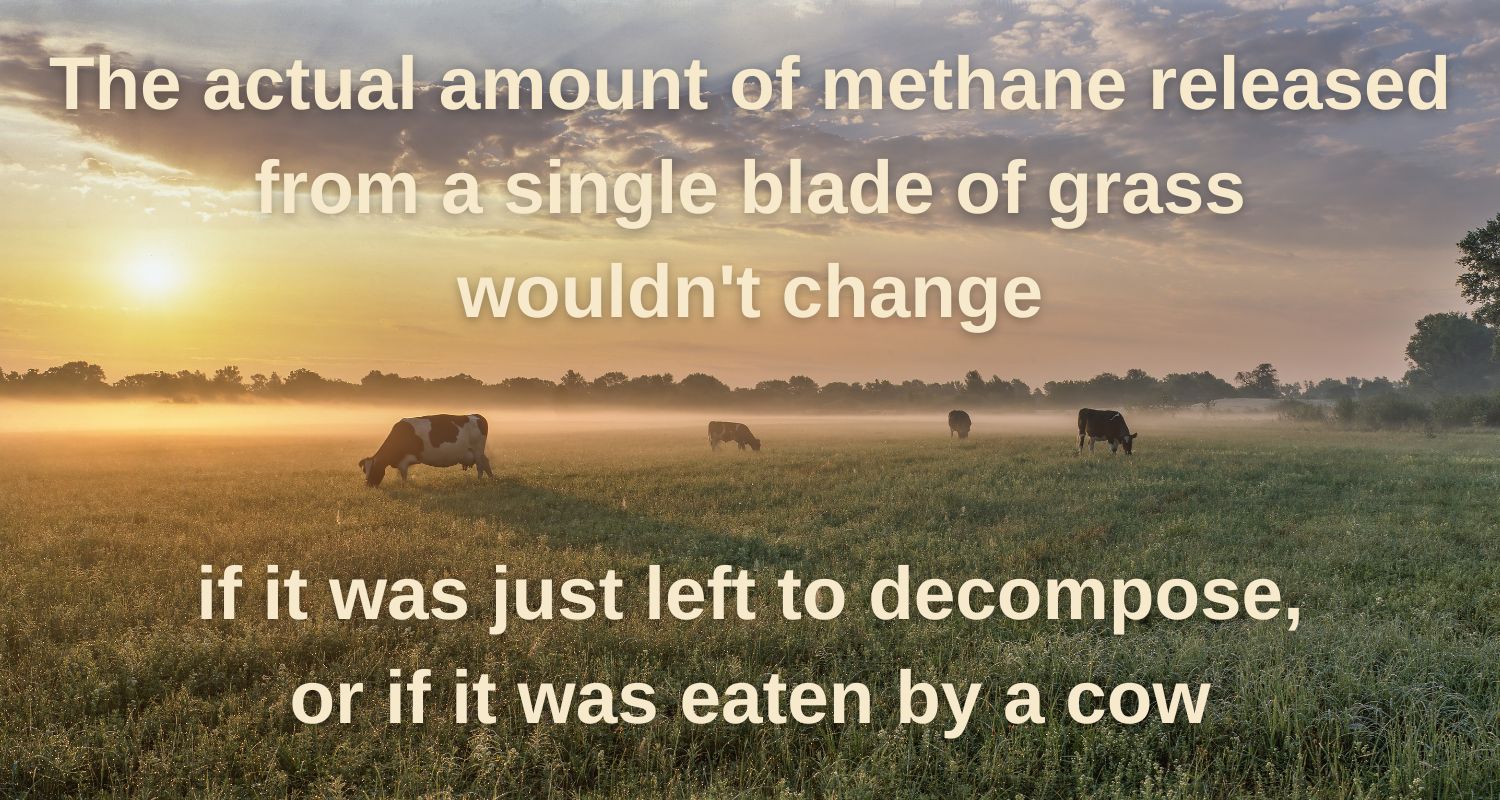Methane - Cows versus no cows by Ethical Butcher (Glen Burrows)

Blog image created with Canva

Methane, methane, methane...... One of the biggest arguments against grazing animals is methane.
We've written about how methane is cycled before but recently came across this article that put things into perspective.
Read this next sentence carefully, possibly read it twice.
The actual amount of methane released from a single blade of grass wouldn't change if it was just left to decompose, or if it was eaten by a cow and then digested by the bacteria in their gut.
The only difference is that the methane would be released more quickly by a cow or other ruminants (animals that acquire nutrients from plant-based foods with the help of microorganisms).
Cattle are ruminant animals and are in the company of about 200 other ruminant species- including sheep, goats, buffalo, deer, elk, giraffes and camels. What characterizes a ruminant animal is a specialized digestive system that allows them to break down and digest food that is indigestible by non-ruminants, such as humans. In fact, Eighty-six percent of global livestock feed is material that is not edible for humans. - Link here
We've covered a lot in previous articles about how cows release methane but essentially it's bacteria in the cow's stomach that breaks down the carbohydrates in the form of cellulose and they create by products of short chain fatty acids and THIS, not the actual grass is what feeds the cows, the cows can be thought of as 'farming' these bacteria to produce their food.
Grass clippings left on your lawn after mowing will decompose in 3-4 weeks on average. Within 1-2 weeks the grass clippings will often no longer be visible, because they will reach the soil level and begin to break down. Grass clippings added to compost will break down fully in 1-3 months. In that time they are subject to the same types of bacteria that are present in the stomach of a cow, this process is no different, let's also remember where the grass got the carbon from in the first place, that's right, it came from the atmosphere.
Without grazing, grasses grow high, desiccate and oxidize. They slough off their roots and after a few years stop growing altogether. By grazing most of the plant leaves and moving on to new pastures, ruminants revitalize grasslands. Without grazing, the land dies.
When the system dies the plants can no longer take carbon from the atmosphere and lock it into the ground, the power of sunlight is a wasted opportunity for carbon removal.
Cattle do not release more methane than grasses would without them, they do speed up the process of the cycle but they are also essential for the continued survival of the cycle. As long as there is no significant increase in the number of cattle on earth then cows are not responsible for increasing levels of atmospheric methane and are in fact, one of the best ways we have of managing the world's grasslands and storing excess carbon underground.
Globally, more carbon is stored in soil than in all the Earth's plants and the atmosphere combined.
References:
https://clear.ucdavis.edu/explainers/how-do-cows-produce-methane
https://www.nationalgeographic.com/environment/article/methane
https://animalbiosciences.uoguelph.ca/abscpeople/cbaes
Written by The Ethical Butcher (Glen Burrows)
Published November 26th, 2022
Social Media:
Facebook
Twitter
Instagram
YouTube
Website
Gary Taubes

Why We Get Fat: And What to Do About It
Diana Rodgers, Robb Wolf

Sacred Cow: The Case for (Better) Meat: Why Well-Raised Meat Is Good for You and Good for the Planet

